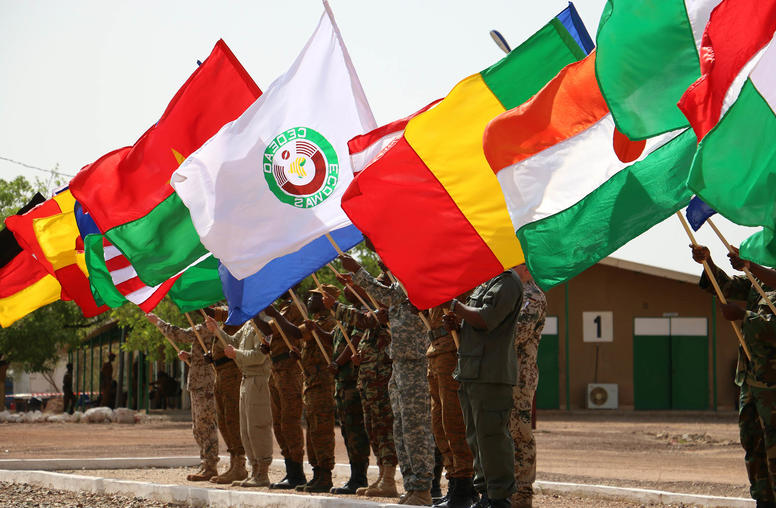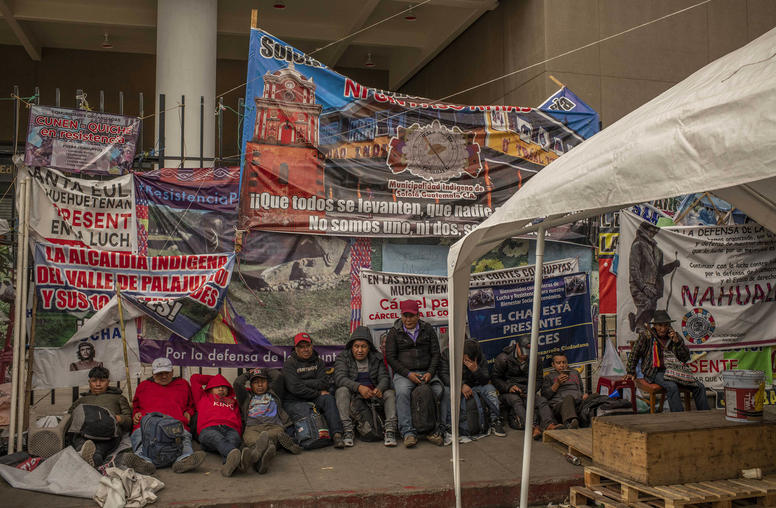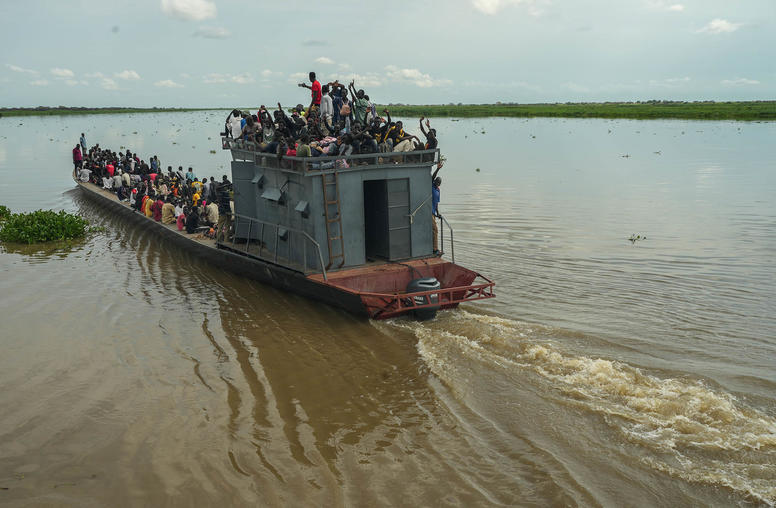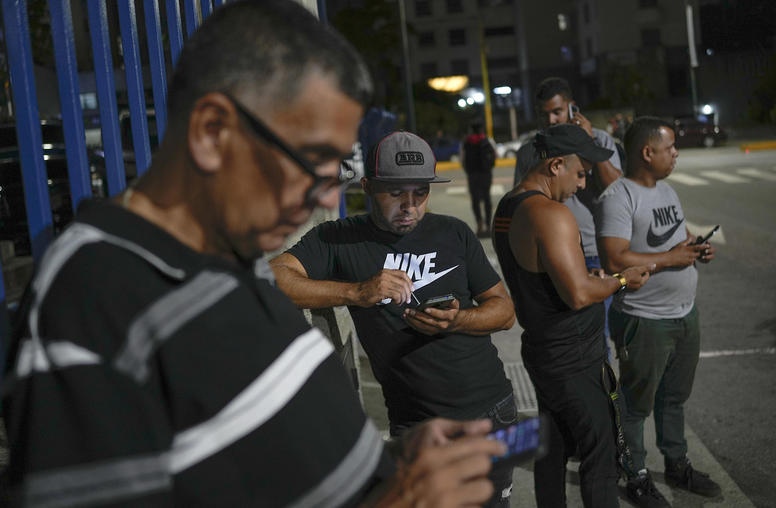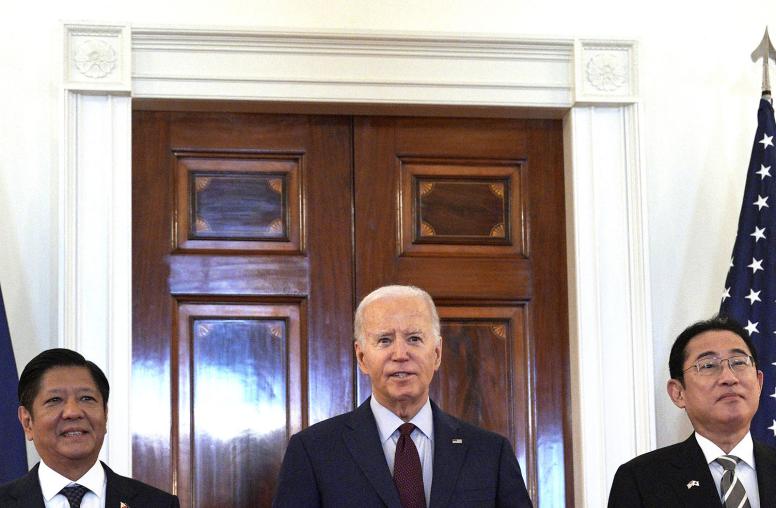The Jihadi Threat 3: Whither al-Qaeda?
Once the uncontested leader of global jihadism, al-Qaeda has been dealt two blows since 2011: its charismatic leader, Osama bin Laden, was killed by the United States in May 2011; and in mid-2014, it was eclipsed by ISIS and a new “caliphate.” Al-Qaeda’s shift away from public view may be strategic and deliberate. It has shaped global jihadism in subtle and shadowy ways in recent years, even as it faded from public view.
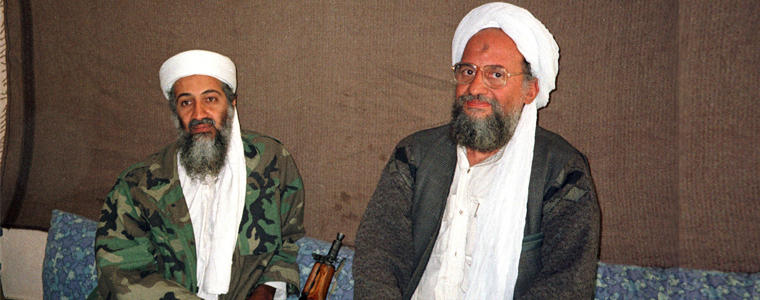
Al-Qaeda has evolved significantly since its formation in the 1980s. Osama bin Laden launched a formal organization, based in Afghanistan and Pakistan, out of jihadist contingents, notably from Egypt, Saudi Arabia, and North Africa. Al-Qaeda was held responsible for 1998 bombings of the U.S. embassies in Kenya and Tanzania; the 2000 bombing of the USS Cole; and the September 11 attacks on the World Trade Center and the Pentagon in 2001. After the 9/11 attacks, U.S. forces invaded Afghanistan, weakening al-Qaeda by capturing and killing many of its core members. In a key shift, its senior leaders then dispersed globally.
After the 2003 U.S. invasion of Iraq, al-Qaeda in Iraq, under Abu Musab al-Zarqawi, became one of the movement’s most powerful affiliates. Zarqawi was killed by a U.S. airstrike in 2006; his fighters were largely routed in 2007, a turning point that tarnished al-Qaeda’s global brand. The organization struggled to revive its reputation. Al-Qaeda in the Arabian Peninsula, based in Yemen, became the more active branch. After bin Laden’s death in 2011, Ayman al-Zawahiri, an Egyptian physician, took over al-Qaeda’s leadership.
The center of gravity had already begun to shift to the affiliate groups. Proxy groups preached al-Qaeda’s ideology without the liability of the al-Qaeda label. Some key figures in Afghanistan and Pakistan also moved to other arenas; at least two dozen went to Syria in a deliberate effort to exploit other theaters of conflict and also get closer to the West physically. A smaller number went to Yemen.
By 2013, U.S. officials estimated that the original al-Qaeda core had only between 50 and 100 members in Afghanistan and Pakistan, although this core has grown again since then. The core was perceived by some experts to be less active than in the past. The movement increasingly evolved into a network of formal affiliates or informal allies in the Middle East, Africa, and Asia. Its Syrian affiliate had at least 5,000 fighters by mid-2014. By the end of 2016, it counted five formal branches. At least a dozen groups worldwide have coordinated with al-Qaeda at some point, albeit in varying degrees.20
Strategy
Al-Qaeda’s core strategy has been progressive destabilization in phases. It has focused on achieving long-term objectives in a controlled, pragmatic way. Its goals have focused on building strength across multiple countries, gathering support from local communities, and gaining the ability to operate openly. It is playing a longer game in Syria, Iraq, and other conflict zones.
Al-Qaeda seeks to establish a global caliphate, but only as an eventual goal. In the 2000s, al-Qaeda affiliates proposed creating emirates in Yemen and Iraq as building blocks for a future caliphate. Bin Laden even endorsed the statehood bid of the Islamic State of Iraq in 2007. But he later cautioned that the time was not right and that these statelets were likely to fail. “If our state is not supported by the proper foundations…the enemy will easily destroy it,” bin Laden wrote in 2010.21 Controlling territory has been less important to al-Qaeda’s short-term strategy than it has been for ISIS. Al-Qaeda affiliates have at times held land, sometimes in defiance of al-Qaeda central command. But they have also withdrawn—in Mali, Somalia, Yemen, and even Afghanistan—when more powerful armies or militias took it from them.
Like ISIS, al-Qaeda has had little tolerance for Shiites and other minorities, who have no place in its narrow worldview. But it views the United States and the West as greater enemies. Its leadership has warned that mass sectarian killings detract from its strategy of restraint and could alienate Muslims. In 2005, Zawahiri, then al-Qaeda’s second-in-command, warned Zarqawi that attacks by al-Qaeda in Iraq on Shiite civilians “won’t be acceptable to the Muslim populace, no matter how much you have tried to explain it.”22
Zawahiri’s position was reinforced when ISI was pushed back between 2007 and 2011. He tried to reassert control by issuing “General Guidelines for Jihad” in 2013 and calling for a single “united” jihad. In 2014, al-Qaeda tried to capitalize on ISIS’s brutality by portraying itself as the more rational jihadist actor. It continues to propagate this narrative. Compared to the Islamic State, al-Qaeda uses violence in a way that is more politically calculated.
Al-Qaeda appears to recognize that its brand is toxic—even among other jihadists. It has been willing to play from a distance with affiliates. It dominated jihadist coalitions in Libya that were not formal affiliates, including the Benghazi Revolutionary Shura Council and the Derna Mujahideen Shura Council. In Tunisia, Ansar al-Sharia espoused al-Qaeda’s ideology but denied organizational links.
Jabhat Fateh al-Sham in Syria (originally known as the Nusra Front) is the most successful example of an al-Qaeda affiliate. Formed in 2011, and announced formally in 2012, it quickly became al-Qaeda’s strongest affiliate and one of the most powerful rebel groups in Syria. In 2016, the group rebranded itself as Jabhat Fateh al-Sham and claimed to have no direct ties to external groups, even though it still shared al-Qaeda’s ideology and strategy—and still liaised with it.
 |
| Al-Qaeda’s Inspire magazine on Jerusalem’s al-Aqsa Mosque. Image from Al-Malahem Media. |
Al-Qaeda’s ambitions in Syria are not limited to JFS. It has attempted to influence other Syrian opposition movements and militias, such as Ahrar al-Sham and others under the Jaysh al-Fatah moniker. Al-Qaeda has tried to use them to popularize the jihadist worldview and eventually unite the jihad behind a common vision, though not necessarily a common organization.
Future
There are at least four evolutionary paths for al-Qaeda. First, al-Qaeda’s model is likely to endure for many years, albeit in different forms. It was the first global jihadist movement and, as such, has been the most strategically and structurally robust. U.S. airstrikes have continued to pick off senior leaders, but al-Qaeda Central has repeatedly demonstrated the ability to fill the holes and adapt. In the November 2016 issue of Inspire, its online magazine in English, al-Qaeda addressed recent loses in U.S. airstrikes:
“By the killing of our brothers, we become more committed to their principles, and—by God’s Will—we will continue clinging to the same course of jihad and da'wa, illuminated by their blood and paved by their torn limbs,” it vowed.
A light illuminating the path for us, and a fire that stirs us up to take revenge from the infidel nations and heads of criminals. We will never enjoy our life till we clean up our land from all oppressive infidels, till the last American soldier get[s] out from the Islamic countries and till we pull out the roots of the last American base from our wounded lands from Rabat to Jakarta.23
Second, al-Qaeda Central is likely to continue building alliances, embedding locally, and exploiting instability on three continents. Its strategy of staying out of the spotlight helps it endure and compete with ISIS’s brand, which has emphasized the need for quick territorial gains. In the short term, al-Qaeda is likely to continue adjusting to political realities and public perception on the ground, even as its long-term goal does not differ from the Islamic State’s.
Syria has been a model. In 2015, Zawahiri instructed the Nusra Front leader
to better integrate his movement within the Syrian revolution and its people; to coordinate more closely with all Islamic groups on the ground; to contribute towards the establishment of a Syria-wide Sharia judicial court system; to use strategic areas of the country to build a sustainable Al-Qaeda power base; and to cease any activity linked to attacking the West.24
Instability in the Middle East is unlikely to abate anytime soon, and al-Qaeda may be able to replicate its model in Syria in other parts of the region over the next five to ten years.
Third, al-Qaeda’s deliberate decentralization has limits. Al-Qaeda risks ceding control over the direction or actions of local armed groups. It could also risk losing control over its core identity in mergers with local groups and integration into local societies. It has made concessions to gain and sustain their support. The inherent tension—between al-Qaeda’s global agenda and the local focus of key allies—could also dilute the movement over time. The gradual erosion of command authority could also produce small and more radical splinter groups. A bigger question is whether this strategy can actually deliver a state.
Fourth, al-Qaeda is likely to continue its terror campaign. It faces greater physical and logistical challenges today in orchestrating terrorist spectaculars. But its imagination knows no limits. Bin Ladenism survived bin Laden. As al-Qaeda stipulated in its 2013 “General Guidelines for Jihad”:
The purpose of targeting America is to exhaust her and bleed her to death, so that it meets the fate of the former Soviet Union and collapses under its own weight as a result of its military, human, and financial losses. Consequently, its grip on our lands will weaken and its allies will begin to fall one after another.25
List of Affiliates
Al-Qaeda has five affiliates. All are insurgent or traditional terrorist groups that have engaged in mass-casualty attacks in their theaters of operation. They follow the statements of al-Qaeda Central, under Ayman al-Zawahiri, but implement a locally tailored strategy.
- Al-Qaeda in the Arabian Peninsula (AQAP)—Yemen. Formed after the merger of the Saudi and Yemeni branches of al-Qaeda, which dates back to the 1990s; announced in January 2009.26
- Al-Qaeda in the Islamic Maghreb (AQIM)—North Africa and Sahel (Algeria). Originally formed as the Salafist Group for Preaching and Combat (GSPC) in 1998; publicly recognized as an al-Qaeda affiliate in September 2006.27
- Al-Qaeda in the Indian Subcontinent (AQIS)—South Asia. Formed in September 2014 from the merger of more than eleven jihadist groups in Pakistan, India, and Afghanistan;28 aligned with al-Qaeda since its creation.
- Al-Shabaab—East Africa (Somalia). Formed in 2006 after breaking away from the Islamic Courts Union;29 pledged allegiance to al-Qaeda in 2009 and formally recognized by al-Qaeda as an affiliate in 2012.
- Jabhat Fateh al-Sham (JFS)—Syria. Originally emerged in January 2012 as Jabhat al-Nusra; pledged allegiance to al-Qaeda in April 2013 and rebranded itself in mid-2016, claiming to no longer be an affiliate.30
Notes
- Global Security, “Al-Qaida / Al-Qaeda (The Base),” accessed November, 15, 2016, www.globalsecurity.org/military/world/para/al-Qaida.htm.
- Mary Habeck, “Al-Qaeda and the Islamic State Caliphate,” Insite Blog on Terrorism and Extremism, SITE Intelligence Group, July 16, 2014, news.siteintelgroup.com/blog/index.php/about-us/21-jihad/4403-al-Qaeda-and-the-islamic-state-caliphate.
- GlobalSecurity.org, “Letter from al-Zawahiri to al-Zarqawi,” July 9, 2005, http://www.globalsecurity.org/security/library/report/2005/zawahiri-zarqawi-letter_9jul2005.htm.
- “The Call to Jihad Doesn’t Die Down with the Death of Our Leaders,” Inspire, no. 16 (Autumn 2016).
- Charles Lister, “Profiling Jabhat Al-Nusra,” Brookings U.S. Relations with the Islamic World Analysis Paper no. 24, July 27, 2016, www.brookings.edu/wp-content/uploads/2016/07/iwr_20160728_profiling_nusra.pdf.
- Stratfor, “Al Qaeda Quietly Maintains Its Relevance,” November 3, 2016, www.stratfor.com/sample/weekly/al-Qaeda-quietly-maintains-its-relevance.
- Mapping Militant Organizations, “Al Qaeda in the Arabian Peninsula,” Stanford University, last modified May 12, 2015, web.stanford.edu/group/mappingmilitants/cgi-bin/groups/view/19.
- Mapping Militant Organizations, “Al Qaeda in the Islamic Maghreb,” Stanford University, last modified July 1, 2016, web.stanford.edu/group/mappingmilitants/cgi-bin/groups/view/65.
- Mapping Militant Organizations, “Al Qaeda in the Indian Subcontinent,” Stanford University, last modified January 11, 2016, web.stanford.edu/group/mappingmilitants/cgi-bin/groups/view/615; FDD’s Long War Journal, “Al Qaeda in the Indian Subcontinent Incorporates Regional Jihadist Groups,” September 5, 2014, www.longwarjournal.org/archives/2014/09/analysis_al_qaeda_in.php.
- Mapping Militant Organizations, “Al Shabaab,” Stanford University, February 20, 2016, web.stanford.edu/group/mappingmilitants/cgi-bin/groups/view/61.
- Mapping Militant Organizations, “Jabhat Fatah al-Sham (Formerly Jabhat al-Nusra),” Stanford University, last modified August 25, 2016, web.stanford.edu/group/mappingmilitants/cgi-bin/groups/view/493.
